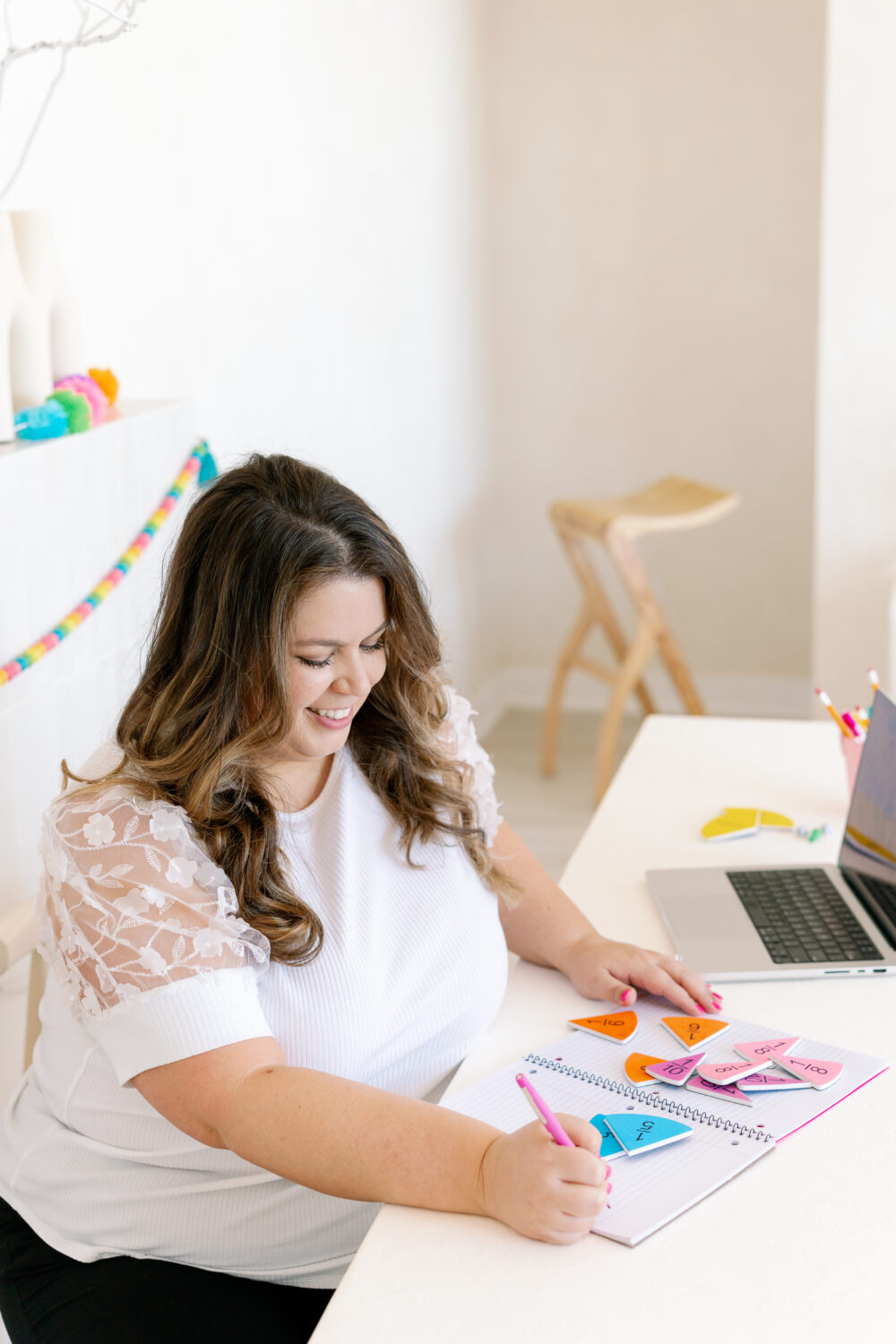10 Close Reading Passages That Your Students Will Love to Read
Looking for close reading passages to help your students with their comprehension?
Informational text can be a struggle for many students.
One of the first steps is making sure they’re interested in what they’re reading.
In case you’re in a rush and you’re hoping to grab passages right away, I’ve got you covered.
➡️ Click here to get 10 high interest close reading passages.
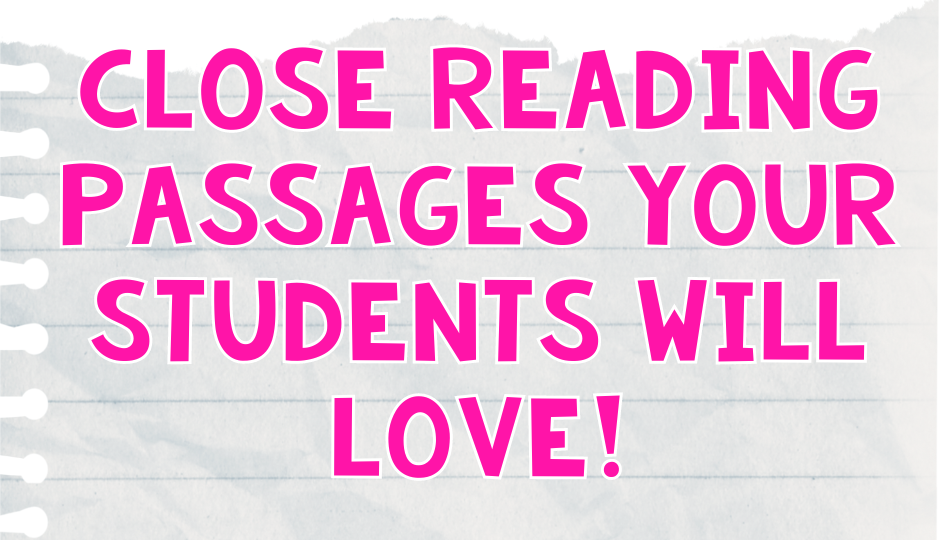
The Importance of Using Close Reading Passages
Close reading passages are so helpful when you’re helping students develop their comprehension skills with informational text.
When you get your students into close reading, you’re asking them to do more than just skim a text.
You’re getting them to really dig in and figure out what’s going on beneath the surface.
It’s all about helping them think critically by paying attention to how the author uses language, structures the text, and what message they’re trying to get across.
This deeper look not only helps them understand the material better, but it also builds their confidence in making inferences and connecting the dots, which are key for solid reading comprehension.
Close reading passages also give students practice in pulling evidence straight from the text—something they’ll need for writing essays and having meaningful discussions.
Instead of just “getting the main idea,” they learn to focus on the little details that make a text really come alive.
And the best part?
You’re helping your students develop skills that will stick with them. In the long run, close reading sets them up to tackle more challenging texts and ideas as they keep moving forward in school.
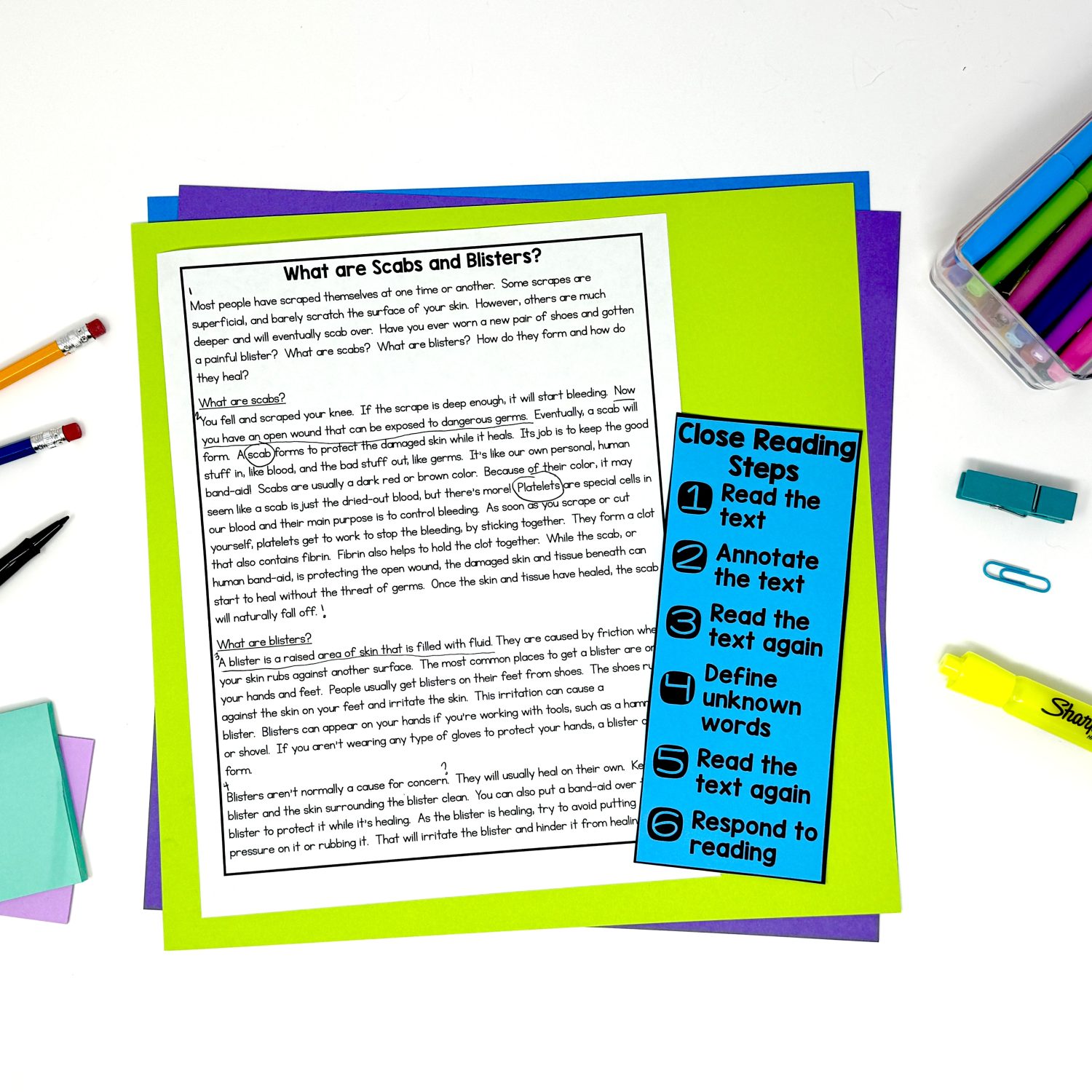
What Makes a Great Close Reading Passage?
So, what exactly makes a close reading passage great?
First off, it’s got to be engaging.
If the passage is boring, you’re going to lose your students before they even start.
A great close reading passage should have a topic that grabs their attention and makes them want to dig in.
Think about subjects they can relate to or find interesting—something that sparks their curiosity.
Next, it should be the right level of challenging.
You want a passage that’s complex enough to push them a little but not so hard that they get frustrated. It should have layers—like interesting vocabulary, figurative language, and a structure that makes them think.
This way, there’s plenty to analyze, and students can practice those critical thinking skills as they work through it.
Finally, a great close reading passage offers lots of opportunities for discussion and analysis.
It should have different angles to explore, whether it’s understanding the author’s purpose, interpreting the tone, or making connections to other texts or their own experiences.
The best passages are the ones that leave room for your students to ask questions and dive deeper, sparking those “aha!” moments that make close reading so powerful.
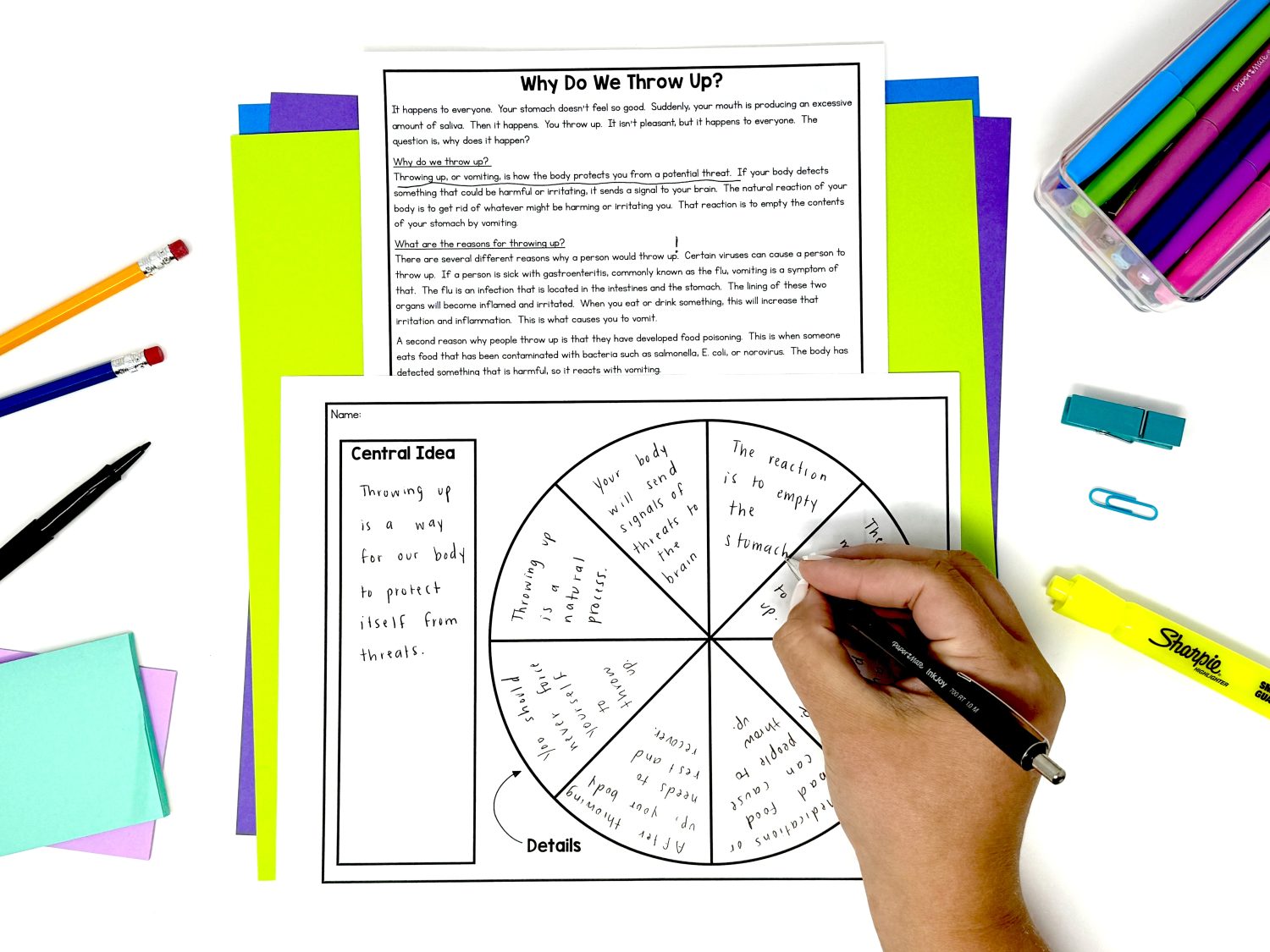
Tips for Implementing Close Reading in the Classroom
Even if you knew all of the close reading strategies in the world, it could still be intimidating if it’s something you haven’t done yet with students.
So in this section, I’ve decided to include a few tips that I’ve learned from my 11 years of teaching!
Start with a Quick Overview
Before diving in, give your students a quick overview of what close reading is all about.
Explain that it’s not just about reading the text but about really thinking about what the author is saying and how they’re saying it.
Use Multiple Reads
Close reading works best when students read the passage more than once.
The first read is all about getting the gist, the second focuses on analyzing language and structure, and the third digs into deeper meanings and connections.
Ask Guiding Questions
Provide your students with specific questions to think about during each read.
For example, during the first read, they might focus on the main idea.
During the second, they could look at how the author uses specific words or phrases to create tone or mood.
Encourage Annotation
Teach your students how to annotate the text—highlighting key phrases, jotting down thoughts in the margins, and underlining parts that stand out.
This helps them actively engage with the text and makes it easier to go back and find evidence later.
Facilitate Group Discussions
After the reading, bring your students together for a group discussion.
This is where they can share their thoughts, compare interpretations, and build on each other’s ideas.
It’s also a great way to deepen their understanding and encourage critical thinking.
Practice Regularly
Like anything else, close reading gets easier with practice.
Make it a regular part of your reading routine so students can build their skills over time.
Here’s a quick summary of these tips:
- Start with a Quick Overview: Explain the purpose of close reading.
- Use Multiple Reads: Have students read the passage several times, each with a different focus.
- Ask Guiding Questions: Provide specific questions for each reading phase.
- Encourage Annotation: Teach students to highlight, underline, and make notes.
- Facilitate Group Discussions: Use discussions to deepen understanding and encourage critical thinking.
- Practice Regularly: Make close reading a consistent part of your routine.
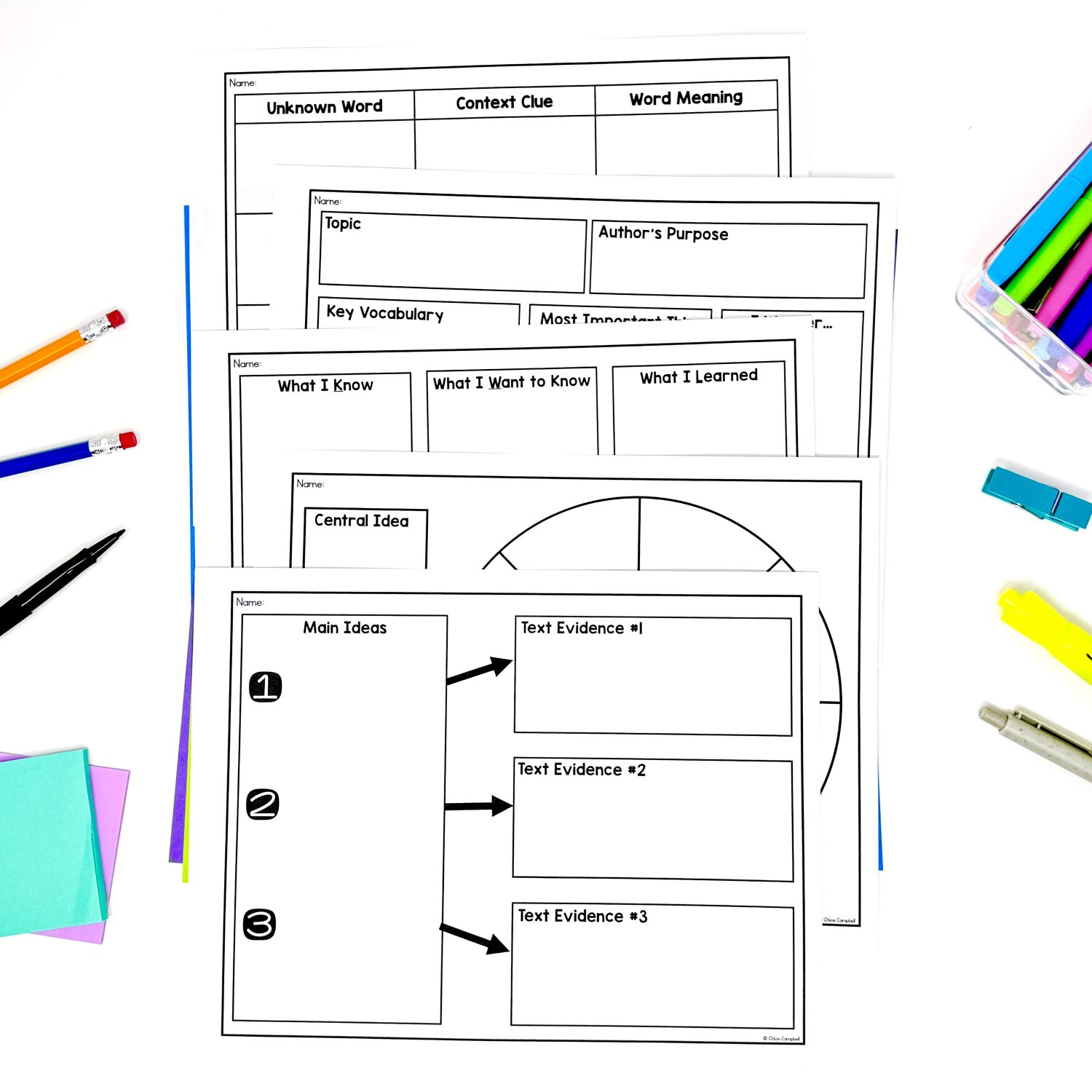
➡️ This resource also includes these close reading graphic organizer PDFs!
The Top 10 Close Reading Passages Your Students Will Love
If you’re on the hunt for some seriously engaging close reading passages that your students will actually enjoy, you’ve got to check out this awesome resource.
These aren’t just any old nonfiction texts—they’re high-interest topics like “What is earwax?” and “Why do we throw up?” that will have your students diving into the content while practicing their close reading skills.
Each passage comes with 10 multiple-choice questions, so your students can really test their comprehension.
Plus, there are graphic organizers included to help them show what they’ve learned and organize their thoughts. It’s the perfect way to connect literacy with science, making it a win-win in terms of engagement and learning.
Here are the 10 informational text topics you’ll get with this bundle:
- What is earwax?
- Why do we bruise?
- A sprain or a broken bone?
- Why do we poop?
- What are boogers?
- Why do we throw up?
- What are scabs and blisters?
- Why do our baby teeth fall out?
- Why do we burp?
- Why does mold grow?
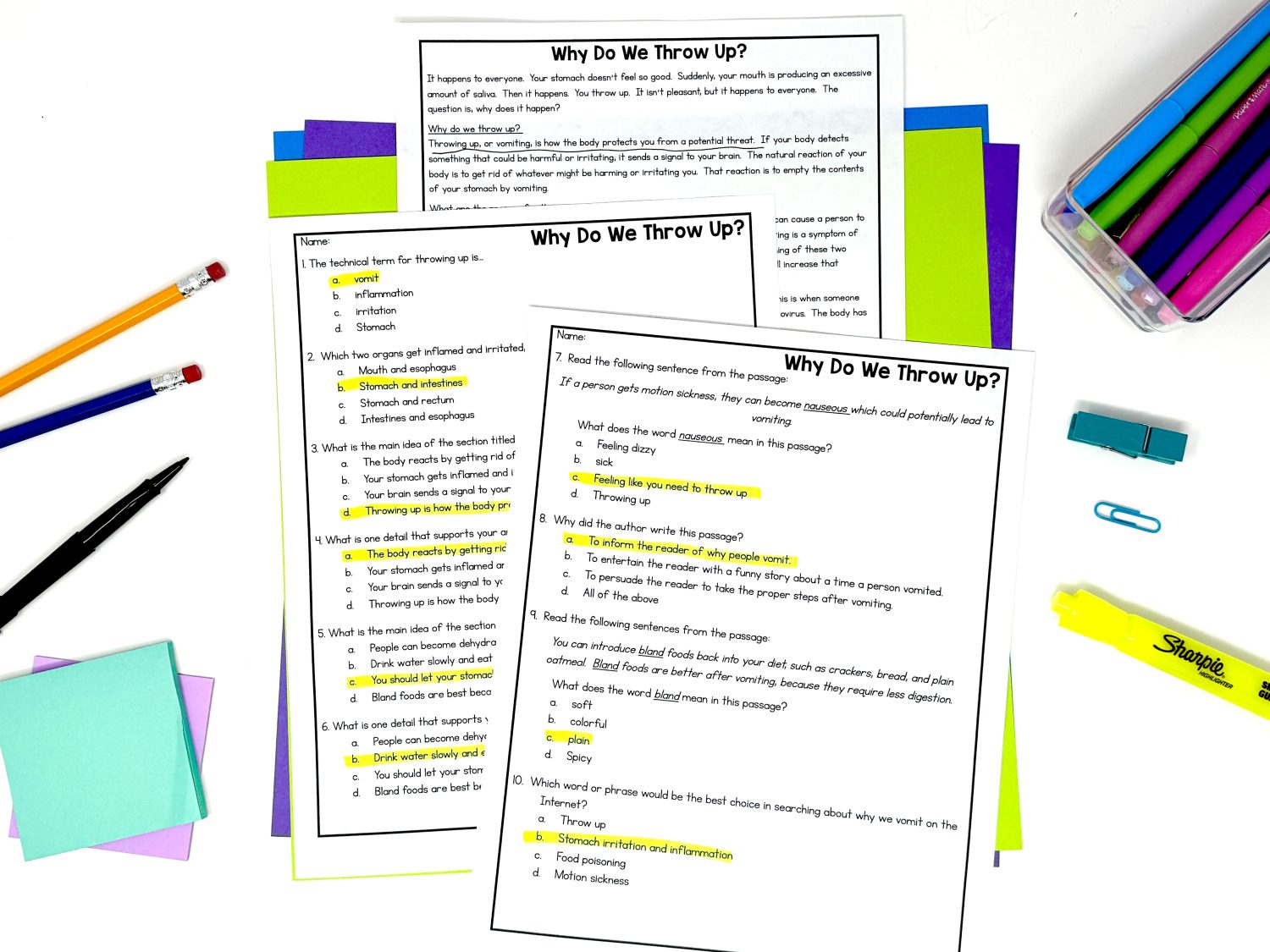
Not only will these passages grab your students’ attention, but they’ll also help you hit multiple standards at once.
The bundle includes everything you need for close reading, from teacher tips to step-by-step bookmarks that guide students through the process of marking up and annotating the text.
There’s even a version tailored specifically for “Annotate the Text” or “Mark the Text,” depending on what works best for your class.
This resource is super versatile—you can use it for whole group instruction, partner practice, guided reading groups, or even as part of your ELA work stations or centers.
It’s also a lifesaver for substitute plans or as a take-home practice activity.
And if you’re looking to boost student engagement while also increasing achievement, these passages are the way to go.
How to Maximize the Impact of Close Reading Passages
Of course, just getting a resource is the start.
Here are a few final tips to help you get the most out of these resources:
Set Clear Objectives: Ensure students know the goal of the close reading activity.
Model the Process: Demonstrate how to approach and analyze the passage.
Encourage Multiple Reads: Have students read the passage multiple times with different focuses.
Use Graphic Organizers: Provide tools to help students organize their thoughts and evidence.
Incorporate Discussion: Facilitate class discussions to deepen understanding and engagement.
Assess and Reflect: Evaluate comprehension and encourage students to reflect on their strategies.
More Resources For Your Students
I know you came here to get help for your students’ reading block.
Need resources for math, too?
I’m passionate about helping students engage with math so they can excel in it, and enjoy it.
You’ll find more ideas and tips over on my Instagram account!




